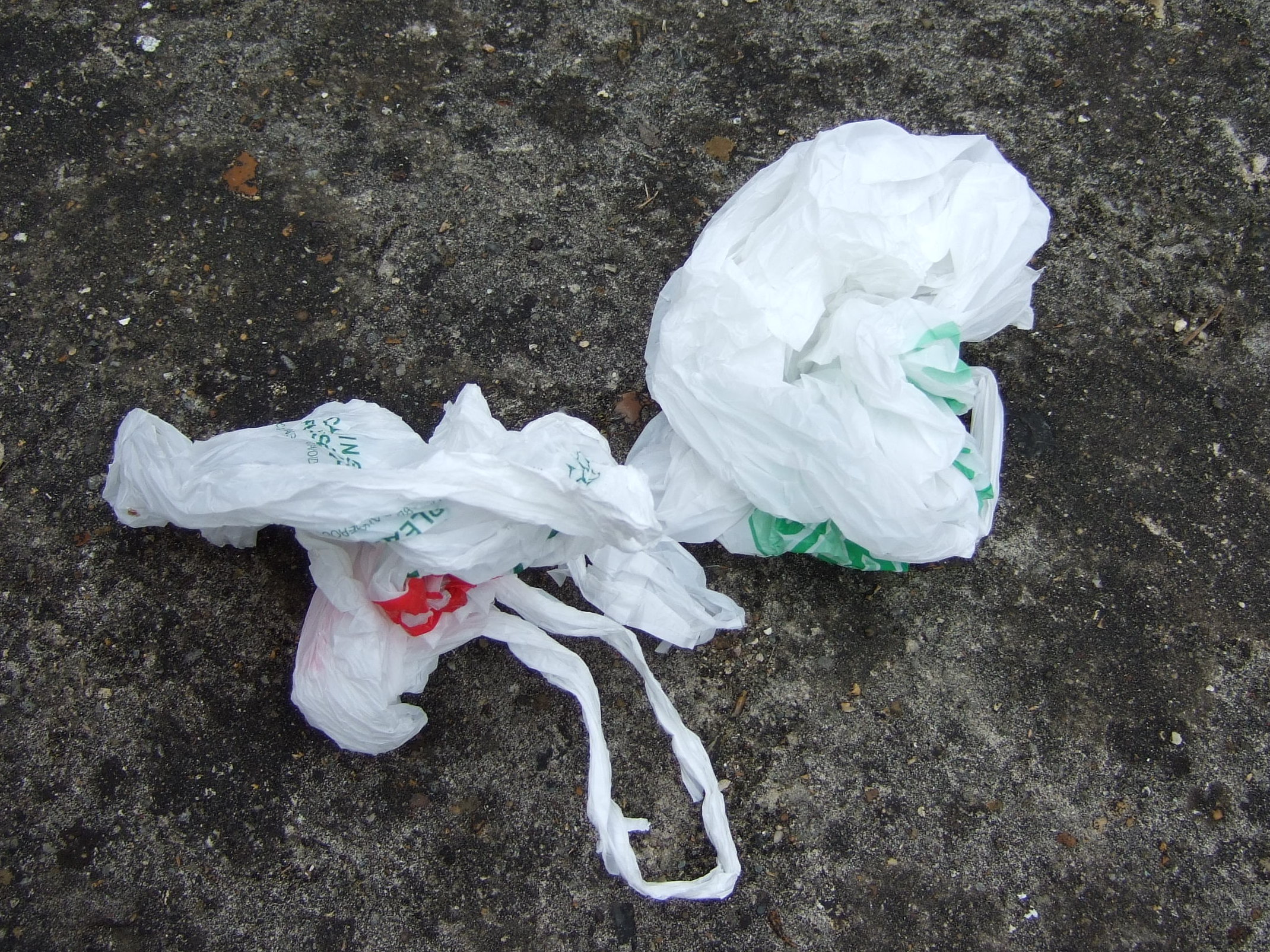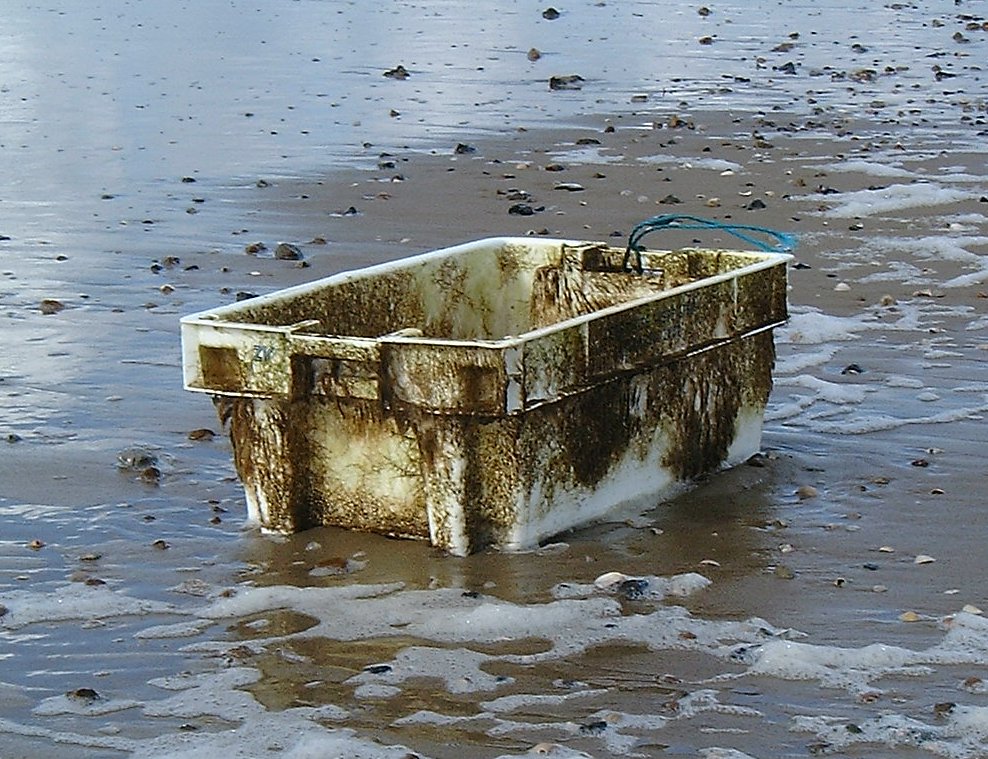Planet Earth - Plastics on the Beach
Interview with
Walk along any beach almost anywhere in the world and you'll find plastics washed up on the shore. From plastic bags to lighters, bottle tops to flip-flops. Plastics have even turned up on the coast of Antarctica! But it's not only the visual effect of this human detritus that's a problem. Plastics actually carry pollutants and even life around the globe, sometimes having serious consequences. Planet Earth podcast presenter Richard Hollingham joined David Barnes from the British Antarctic Survey on the Pebble Beach in the wind and rain sadly at Cley in North Norfolk...
 David - So we're going to walk along two strandlines. One, the storm line where the last time there was a big storm there's deposited lots of natural debris, but also man-made things, and along the strandline from the last big tide. And we're going to walk along and look at some of the more persistent items of debris particularly plastic, and see what it tells us about the ocean, far away from these shores.
David - So we're going to walk along two strandlines. One, the storm line where the last time there was a big storm there's deposited lots of natural debris, but also man-made things, and along the strandline from the last big tide. And we're going to walk along and look at some of the more persistent items of debris particularly plastic, and see what it tells us about the ocean, far away from these shores.
Richard - So we've got here a plastic bag and I think we can probably tell from the green lettering which supermarket that's from. It's torn and it's gone translucent, but it's still retained its essential plastic bagness.
David - Yeah. Plastic bags are made of very, very thin plastics, so they break down relatively easily with salt spray and UV light, as long as they stay in the top layer. But even this could've travelled quite some distance and we can see that looking at it closely, you can see all sorts of things have started to get a grip on top of it, including foraminiferans. So life has started to colonise this plastic bag.
Richard - That's amazing. You've also got down here - I think this is part of the heel of a shoe.
David - What will happen with lots of these materials is when it starts to get broken up, the surface has got a very good texture for settlement because it slows down the water over it. Its boundary effect will be slightly stronger than the smooth pebbles and other smooth things that are typically floating. So life can get a grip and then it can be carried around. But it's not just life. These plastics will absorb all sorts of things such as toxic chemicals and transport those around as well. And so, various groups over the UK and elsewhere have been studying what plastics can carry, how far they're carrying them, and what sort of effects they have.
 Richard - And that for you is almost a bigger issue than that they're not aesthetically pleasing to see on a beach. Here, we've got a green bottle top, there's a little bit of string here, the plastic bag, but it's the fact that not only these spread toxic chemicals in the environment. They carry life around the environment.
Richard - And that for you is almost a bigger issue than that they're not aesthetically pleasing to see on a beach. Here, we've got a green bottle top, there's a little bit of string here, the plastic bag, but it's the fact that not only these spread toxic chemicals in the environment. They carry life around the environment.
David - Yeah and we can see on this piece of plastic twine that we've actually got two different species of hydroids, one on the base there and another one halfway up, and they're actually reproductively active. They'll be releasing larvae, so this is not just transporting adults around. These will be producing larvae that will settle wherever this goes.
Richard - So these tiny little - almost twig-like projections on the side, they're alive and so, they kind of mingle in. They almost become part of the twine there.
David - Yeah and actually, I've found a 3rd species, so we've got three species just on this insignificant little piece of twine. These species are probably native to the UK, but there'll be other species that come in that aren't and that's where the problem is. It can make a big difference to local aquaculture and fisheries if some alien pest gets in, becomes established, and then really starts to outcompete or eat our native fauna. But these pieces of plastic travelling for many years, perhaps decades, that that means we can get animals and algae, and other organisms from all over the world, landing on our shores.
Richard - It doesn't, I suppose matter that there's this twine with life clinging onto it here, but it might matter in other parts of the world.
David - It's still a problem here, but it is more a problem elsewhere. We have to remember that looking along the strandline here, we can see lots of natural material. We can see seaweeds and we can see bryozoans, and other animals especially crab shells that have floated here naturally and they've been doing this for a long period of time. For hundreds of millions of years, life has been floating around this part of the world, but in the Polar regions where there aren't lots of things that float, there aren't shells that naturally float, there aren't seeds, and logs, and other material that we would naturally see on our strandline, then plastic there and other floating manmade debris has made a huge difference because it's created this new environment of things floating on the surface, transporting organisms that wasn't there before.
- Previous The Rolls-Royce Science Prize
- Next What is Turbulence?










Comments
Add a comment